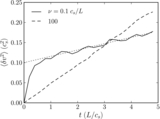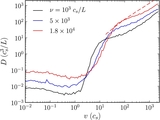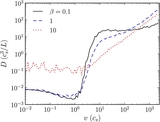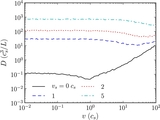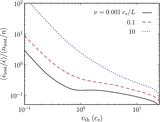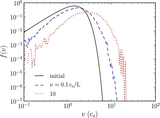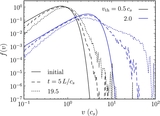Image Details
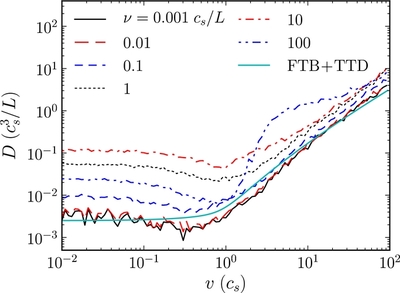
Caption: Figure 3.
Test particle velocity diffusion coefficients for low scattering rates for the fiducial simulation (see Table 1). Scatterers are stationary in the fluid frame. The solid cyan curve is a fit to a functional form given by a sum of Fermi Type-B and resonance-broadened transit-time damping in which particles interact with turbulent fluctuations in magnetic field strength. This provides a reasonable description at low scattering rates and/or high velocities. At high scattering rates (ν ~ 100 c s / L), however, the functional form of the diffusion coefficient in the test particle calculations changes significantly. This corresponds to the transition to a non-resonant regime in which particles interact primarily with turbulent density fluctuation (see Figure 4 and Section 2.2).
Copyright and Terms & Conditions
© 2013. The American Astronomical Society. All rights reserved.



